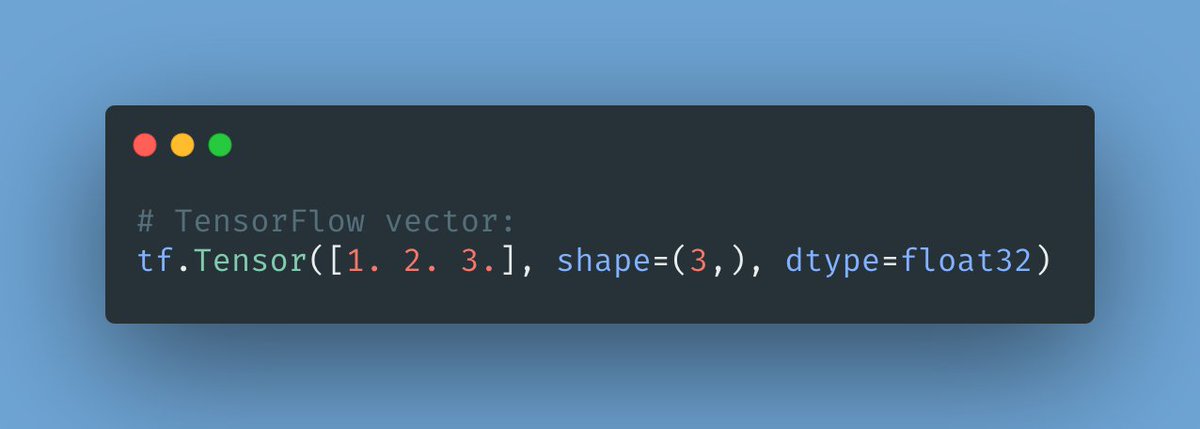
I've been teaching people how to start with machine learning for more than a year now.
This is a thread with what I've learned and some advice if you are looking to start.
↓ 1/14
This is a thread with what I've learned and some advice if you are looking to start.
↓ 1/14
People enjoy the process of getting ready to start something new.
Like the first time they go to the gym: they buy supplements, shorts, shoes, and a new headband.
Unfortunately, this is not enough.
↓ 2/14
Like the first time they go to the gym: they buy supplements, shorts, shoes, and a new headband.
Unfortunately, this is not enough.
↓ 2/14
Most people never stop preparing.
They keep collecting books, tutorials, the "best" videos and ask the same "how to start" questions.
The only thing they forget: taking a concrete step forward.
↓ 3/14
They keep collecting books, tutorials, the "best" videos and ask the same "how to start" questions.
The only thing they forget: taking a concrete step forward.
↓ 3/14
The best course you can watch is the one that you already know of.
The best book is already in your bookcase.
Stop chasing "the best" and pay attention to what's right in front of you.
↓ 4/14
The best book is already in your bookcase.
Stop chasing "the best" and pay attention to what's right in front of you.
↓ 4/14
People think they need a roadmap.
They don't. A roadmap is distracting.
What they really need is a single step that sends them in the right direction.
The next step always becomes clear after you start walking.
↓ 5/14
They don't. A roadmap is distracting.
What they really need is a single step that sends them in the right direction.
The next step always becomes clear after you start walking.
↓ 5/14
Almost everyone who asks for problems to solve isn't ready to solve problems in the first place.
↓ 6/14
↓ 6/14
Those who tell you that machine learning is easy don't really understand what machine learning is.
Those who tell you that it is hard to start with machine learning have never started themselves.
↓ 7/14
Those who tell you that it is hard to start with machine learning have never started themselves.
↓ 7/14
Those who make a huge deal of needing to learn Python instead of using their favorite language rarely make it.
If you are afraid of learning a new syntax, wait until you find out what machine learning really is.
↓ 8/14
If you are afraid of learning a new syntax, wait until you find out what machine learning really is.
↓ 8/14
Those who make good progress almost always do it as part of a group.
Find like-minded people that want to take this journey with you.
It will increase your odds significantly.
↓ 9/14
Find like-minded people that want to take this journey with you.
It will increase your odds significantly.
↓ 9/14
If you finish a course, and the only thing you have to show for it is inside your head, you didn't do it right.
Apply what you learn, solve exercises, write a journal, build a portfolio, tweet about it.
↓ 10/14
Apply what you learn, solve exercises, write a journal, build a portfolio, tweet about it.
↓ 10/14
Most people are scared about their math skills. Funny enough, it's their programming skills what really hold them back.
Invest in becoming a good developer.
↓ 11/14
Invest in becoming a good developer.
↓ 11/14
Machine learning is a hard, life-long commitment.
If you are looking for quick money, more job opportunities, and less complexity, there are better options for you out there.
↓ 12/14
If you are looking for quick money, more job opportunities, and less complexity, there are better options for you out there.
↓ 12/14
Machine learning is hard.
But if you put in the work and stick with it, nothing will ever compare to your ability to solve some of the hardest problems humans face.
↓ 13/14
But if you put in the work and stick with it, nothing will ever compare to your ability to solve some of the hardest problems humans face.
↓ 13/14
A few weeks ago, I wrote 16 takeaways that are very relevant for this conversation, so check that thread out:
14/14
https://twitter.com/svpino/status/1379809571254976516?s=20
14/14
• • •
Missing some Tweet in this thread? You can try to
force a refresh







